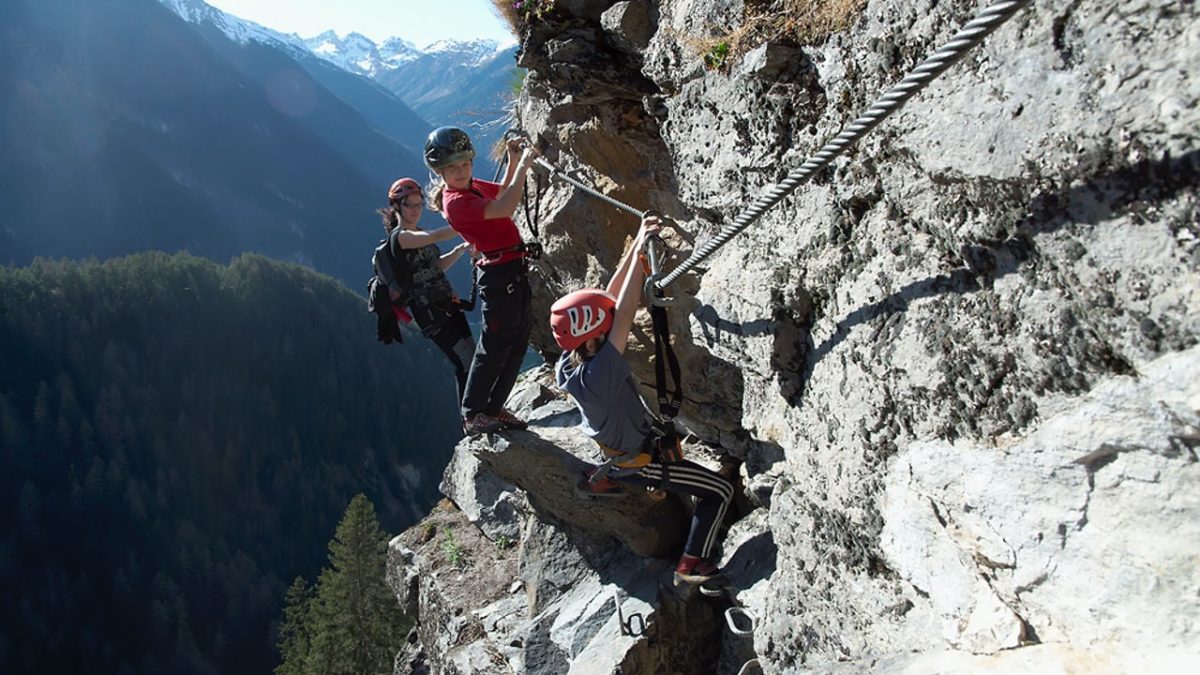The iron roads or fixed-rope climbing routes have been around for over a hundred years. Once used to allow fast movement in the mountains, they have emerged into a popular sport and promise alpine fun. The sights and thrills that have been reserved for experienced alpine climbers before, are now accessible to a wider range of people.
In a via ferrata the climber is protected by being secured to a steel cable that is fixed to the wall along the route. There can also be ladders and footholds to cross the most difficult and dangerous paths. These aids allow more and more people to reach breathtaking places and experience an unforgettable adventure. Imagine being 200 meters above the ground in a steep wall with your feet on a small ledge.
Not every via ferrata is the same, there are several difficulty levels. They range from A to E and get progressively more difficult and dangerous. A is easy, fun and doable by the average person. From B onwards you need a level of fitness and when going a C route with kids, think about securing them with an extra rope. From level D onwards you should have some climbing experience because you might encounter longer vertical parts or even overhanging cliffs. You shouldn’t go these without appropriate gear or with kids. E is for experienced climbers only, be sure to carefully plan the route. Please remember that the difficulty levels are just an approximation, in the end you are responsible and need to be aware of your own limitations.
What equipment do you need to walk or climb a via ferrata ? There are via ferrata kits you can buy or often rent from local shops and mountain guides. They consist of a climbing belt that can be secured to the steel rope in the wall. In the worst case, the kit will stop your fall so you can get back to the route and continue. You also need to bring a helmet in case of falling rocks. Gloves are a nice addition to protect your hands. Lower difficulties can be done in your normal hiking gear but the more difficult routes require climbing shoes. As in all alpine adventures pack enough water, food, appropriate clothes and sunscreen. Before you enter a route, be sure to check the mountain guides advice and the weather conditions.
The most important accessory when going on one of the vie ferrate? A climbing partner or group. Not only because it is safer in case of an accident, but mostly because of the fun. Who should take your picture on a particularly steep part of the climb with the amazing sight ? Who to encourage you to go on? That you can do it and just need to put that foot a little bit higher to reach the next step? Who to shout to about the breathtaking view? And who to share the post climb excitement with when you have reached the end of the ropes and look over the drops and climbs you have mastered?
Vie ferrate might be safe enough to go alone but seriously, who would want to when sports are so much more fun together?

